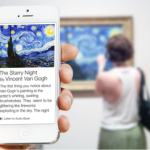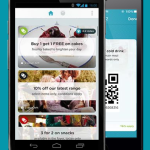The mobile world is transforming the way businesses reach their customers — and sometimes even the way they do business. After a miracle of engineering that was multi-touch interfaces and powerful but miniscule processors, the days of the “mobile internet” are now behind us. As one first gen iPhone ad famously put it: “It’s not the kinda sorta looks like the internet. It’s just… the internet.”
Once consumers were finally able to get an uncompromised version of the internet in a mobile form, the game changed. Overall mobile internet users have now surpassed desktop users. Mobile users also tend to be more action-oriented — 70% of mobile searches lead to action on websites within one hour. Brands who want to keep up in this changing digital landscape will have to embrace a few new ideas in order to fully come to grips with what the mobile revolution truly means for commerce.
Embrace Mobile First
Too many brands are still seeking out online platforms, layouts and website environments that simply could not work on mobile because of size limitations. The old tactics of shoehorning a website into a mobile platform are now painfully obvious to the more tech-savvy mobile consumer. You must be able to design a site that looks appealing on a smaller touchscreen and then be willing to “blow it up” to desktop size in a way that does not sacrifice quality or navigability.
There is no reason to feel averse to this strategy, either. While a desktop-focused environment in the past enabled you to use more intensive graphics or creative site designs, now all it gets you is more screen real estate. Mobile platforms have just as much power to process the average website, and with touchscreen navigation you can make even more engaging and intriguing designs than before.
Know Your Mobile Audience
Beyond simply coming to grips with a mobile-first business world, brands will have to decide which type of mobile consumer they are targeting. They can use website analytics to determine important factors like:
âWhat percentage of mobile traffic is brought by search engines?
âWhat percentage of mobile traffic is brought by social media?
âWhat is the split between visiting smartphone and tablet users?
âWhat is the average attention span of the mobile user based on time spent on site or per page?
âDoes my audience engage more with certain content topics or formats?
Answers to questions like these guide mobile strategy and let brands target a highly-specialized mobile experience. For instance, an older audience that prefers longer articles would be different than an 18-28 year old audience that prefers quicker, more media-rich content.
Make Long Form Digestible
Having a good mix of content types is typically an excellent digital marketing strategy, but with mobile audiences, brands must consider that text-rich posts are harder to parse through. Keep the in-depth approach, but find ways to split up the experience in ways that are easy to navigate. Some methods brands are using to achieve this are:
âEmphasizing list formats
âUsing lots of bullets or media to break up text
âMaking longer lists into slides
âCreating deeper guides that are easy to navigate and consult to supplement shorter but more complex posts
âPosting infographics
âCreating videos out of articles
Use of informative lead-in paragraphs that summarize content succinctly and strong calls-to-action that have obvious next steps also increases the effectiveness of longer format posts.
Move Toward Omnichannel
Internet-enabled apps such as Instagram constitute a huge portion of mobile traffic. Brands that want to capture a larger mobile audience will want to move their conversation onto multiple platforms, including apps, websites and one-to-one conversations through SMS and push notifications.
The problem now is that messages broadcast on these multiple channels can sometimes feel conflicting or redundant by turns. Managing all of these venues at once can be a real struggle for businesses that do not have the tools to ensure consistent brand messages that make the best use of the chosen venue.
Digital Social Retail can help these brands by making omnichannel a simpler goal to realize. Messaging through social media, e-mail, SMS, in-store digital signage and loyalty programs can all be handled through one easy-to-use cloud-based program. All of this activity is also linked to robust analytics, making decisions easier to reach with a more accurate eye on your audience’s preferences and behavior. Visit our product page to learn more about how we can help unlock your brand’s mobile potential.







